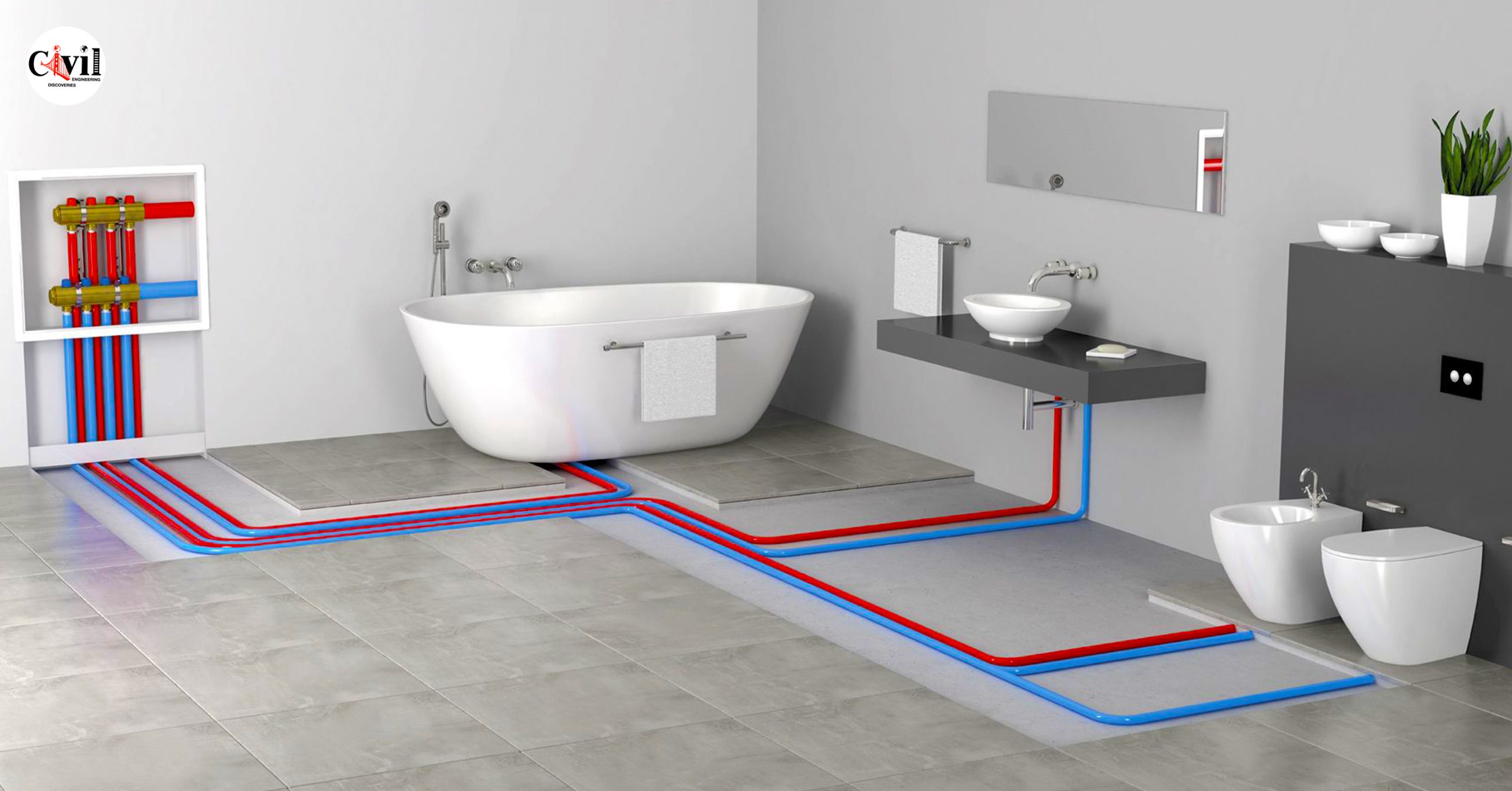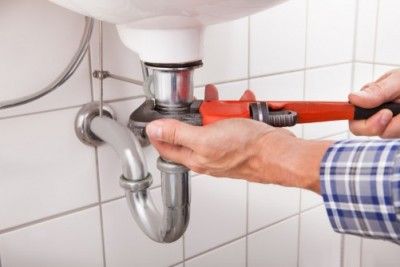Every person may have his or her own rationale on the subject of Plumbing Installation 101: All You Need to Know.

Comprehending how your home's pipes system works is crucial for each homeowner. From providing clean water for alcohol consumption, cooking, and bathing to securely eliminating wastewater, a well-maintained pipes system is crucial for your family members's health and wellness and convenience. In this comprehensive overview, we'll explore the complex network that makes up your home's pipes and deal suggestions on upkeep, upgrades, and dealing with usual issues.
Intro
Your home's plumbing system is greater than just a network of pipelines; it's a complex system that ensures you have accessibility to clean water and effective wastewater elimination. Understanding its elements and just how they work together can assist you protect against costly repair work and make sure every little thing runs smoothly.
Basic Parts of a Pipes System
Pipes and Tubing
At the heart of your plumbing system are the pipes and tubes that carry water throughout your home. These can be made from numerous products such as copper, PVC, or PEX, each with its advantages in regards to longevity and cost-effectiveness.
Fixtures: Sinks, Toilets, Showers, and so on.
Components like sinks, commodes, showers, and bathtubs are where water is utilized in your house. Understanding just how these fixtures connect to the plumbing system aids in detecting problems and preparing upgrades.
Shutoffs and Shut-off Points
Shutoffs regulate the flow of water in your plumbing system. Shut-off shutoffs are crucial during emergency situations or when you require to make repair work, allowing you to isolate parts of the system without interrupting water circulation to the whole residence.
Water Supply System
Main Water Line
The primary water line links your home to the local water or an exclusive well. It's where water enters your home and is distributed to different components.
Water Meter and Stress Regulatory Authority
The water meter steps your water usage, while a pressure regulator makes sure that water moves at a secure stress throughout your home's pipes system, protecting against damages to pipelines and components.
Cold Water vs. Warm water Lines
Understanding the distinction between cold water lines, which supply water straight from the primary, and hot water lines, which bring warmed water from the hot water heater, helps in troubleshooting and planning for upgrades.
Drainage System
Drain Pipes and Traps
Drain pipes bring wastewater far from sinks, showers, and commodes to the sewage system or septic tank. Catches protect against sewage system gases from entering your home and additionally catch particles that might trigger clogs.
Ventilation Pipes
Air flow pipelines enable air right into the water drainage system, avoiding suction that might reduce water drainage and trigger traps to empty. Proper air flow is crucial for preserving the integrity of your pipes system.
Value of Proper Water Drainage
Making sure proper drainage avoids backups and water damages. Consistently cleaning drains and keeping catches can avoid pricey repair services and prolong the life of your plumbing system.
Water Furnace
Types of Hot Water Heater
Water heaters can be tankless or typical tank-style. Tankless heating units warmth water as needed, while tanks save warmed water for immediate usage.
Exactly How Water Heaters Connect to the Plumbing System
Recognizing how water heaters link to both the cold water supply and hot water distribution lines helps in diagnosing concerns like inadequate hot water or leakages.
Maintenance Tips for Water Heaters
Consistently flushing your water heater to eliminate debris, checking the temperature level setups, and examining for leakages can expand its life expectancy and boost power efficiency.
Typical Pipes Problems
Leakages and Their Causes
Leakages can occur as a result of aging pipelines, loose fittings, or high water stress. Resolving leakages without delay avoids water damages and mold development.
Clogs and Blockages
Obstructions in drains pipes and toilets are commonly brought on by flushing non-flushable things or a buildup of oil and hair. Utilizing drainpipe screens and bearing in mind what goes down your drains pipes can stop obstructions.
Signs of Plumbing Issues to Expect
Low water pressure, slow-moving drains, foul odors, or uncommonly high water costs are indicators of potential pipes problems that must be addressed promptly.
Pipes Upkeep Tips
Regular Evaluations and Checks
Set up yearly plumbing evaluations to capture concerns early. Look for indications of leaks, rust, or mineral accumulation in taps and showerheads.
DIY Upkeep Tasks
Simple tasks like cleaning tap aerators, looking for toilet leaks using dye tablets, or protecting exposed pipes in cold climates can stop major plumbing problems.
When to Call a Specialist Plumber
Know when a pipes issue calls for specialist proficiency. Attempting complex fixings without proper expertise can lead to more damage and higher repair work prices.
Upgrading Your Plumbing System
Reasons for Updating
Updating to water-efficient components or changing old pipes can boost water top quality, minimize water costs, and enhance the worth of your home.
Modern Pipes Technologies and Their Advantages
Discover modern technologies like wise leak detectors, water-saving toilets, and energy-efficient water heaters that can save cash and lower ecological influence.
Price Considerations and ROI
Compute the in advance expenses versus long-term financial savings when thinking about plumbing upgrades. Many upgrades pay for themselves with reduced energy costs and less repair services.
Environmental Impact and Preservation
Water-Saving Fixtures and Home Appliances
Mounting low-flow taps, showerheads, and toilets can considerably reduce water usage without giving up efficiency.
Tips for Lowering Water Usage
Basic routines like repairing leaks promptly, taking shorter showers, and running complete loads of laundry and dishes can conserve water and reduced your energy costs.
Eco-Friendly Plumbing Options
Think about sustainable pipes materials like bamboo for flooring, which is durable and environmentally friendly, or recycled glass for counter tops.
Emergency Preparedness
Steps to Take During a Pipes Emergency situation
Know where your shut-off shutoffs lie and exactly how to turn off the water supply in case of a ruptured pipeline or significant leakage.
Significance of Having Emergency Situation Calls Helpful
Keep contact details for regional plumbings or emergency services readily offered for fast reaction during a pipes crisis.
Do It Yourself Emergency Situation Fixes (When Suitable).
Momentary repairs like using duct tape to spot a dripping pipe or placing a pail under a leaking faucet can decrease damages till an expert plumbing arrives.
Verdict.
Comprehending the anatomy of your home's pipes system empowers you to keep it efficiently, conserving time and money on repairs. By adhering to routine upkeep regimens and staying notified concerning contemporary plumbing modern technologies, you can ensure your plumbing system runs efficiently for several years to find.
Understanding Your Home Plumbing System: A Comprehensive Guide
Plumbing System: The Lifeline of Your Home
At its core, the plumbing system is designed to perform two primary functions: bring fresh water into your home and remove wastewater. The system is a network of pipes, fixtures, and other components that transport water and sewage. Residential plumbing systems include potable water supply lines, drain-waste-vent (DWV) systems, and various plumbing fixtures that make water use in daily tasks possible.
Key Components:
Water Supply: This part of your plumbing system brings municipal water into your home, passing through the main water supply line. It s responsible for supplying all water needs, from drinking to bathing.
Drainage System: It carries waste and water away from your home to the sewer or septic system. This system includes all the piping within your home that leads to external sewage or septic systems.
Vent System: An essential yet often overlooked component, the vent system allows sewer gases to escape and lets air into the drainpipes, ensuring water and waste move correctly through the system.
Fixture: More Than Just Taps and Toilets
Plumbing fixtures are the most interactive parts of the plumbing system, including faucets, showers, toilets, and sinks. Each fixture is connected to the plumbing system and plays a role in either the delivery of freshwater or the disposal of waste and wastewater.
Types of Fixtures:
Faucets and Sinks: Used for washing hands, dishes, and other daily water needs.
Toilets: Dispose of human waste through the sewage system.
Bathtubs and Showers: Provide bathing facilities, requiring both hot and cold water supply.
Water Supply: The Source of Life
The water supply system is a critical component, ensuring that potable water is available throughout your home for various uses, including drinking, cooking, and cleaning. This system consists of pipes that distribute water to different parts of the house, controlled by valves to regulate the water flow.
Types of Plumbing: Materials and Methods
Various types of plumbing systems and materials are used in residential settings, each with its advantages and applications. From copper and PVC pipes for water supply to cast iron and ABS for drainage, the choice of materials can impact the longevity and efficiency of your plumbing system.
https://intownplumbingtx.com/articles/home-plumbing-system-guide/

Understanding Your Home Plumbing System: A Comprehensive Guide
Plumbing System: The Lifeline of Your Home
At its core, the plumbing system is designed to perform two primary functions: bring fresh water into your home and remove wastewater. The system is a network of pipes, fixtures, and other components that transport water and sewage. Residential plumbing systems include potable water supply lines, drain-waste-vent (DWV) systems, and various plumbing fixtures that make water use in daily tasks possible.
Key Components:
Water Supply: This part of your plumbing system brings municipal water into your home, passing through the main water supply line. It s responsible for supplying all water needs, from drinking to bathing.
Drainage System: It carries waste and water away from your home to the sewer or septic system. This system includes all the piping within your home that leads to external sewage or septic systems.
Vent System: An essential yet often overlooked component, the vent system allows sewer gases to escape and lets air into the drainpipes, ensuring water and waste move correctly through the system.
Fixture: More Than Just Taps and Toilets
Plumbing fixtures are the most interactive parts of the plumbing system, including faucets, showers, toilets, and sinks. Each fixture is connected to the plumbing system and plays a role in either the delivery of freshwater or the disposal of waste and wastewater.
Types of Fixtures:
Water Supply: The Source of Life
The water supply system is a critical component, ensuring that potable water is available throughout your home for various uses, including drinking, cooking, and cleaning. This system consists of pipes that distribute water to different parts of the house, controlled by valves to regulate the water flow.
Types of Plumbing: Materials and Methods
Various types of plumbing systems and materials are used in residential settings, each with its advantages and applications. From copper and PVC pipes for water supply to cast iron and ABS for drainage, the choice of materials can impact the longevity and efficiency of your plumbing system.
https://intownplumbingtx.com/articles/home-plumbing-system-guide/
As an avid reader about Plumbing Installation 101: All You Need to Know, I thought sharing that excerpt was worthwhile. For those who liked our article plz be sure to share it. Thank you for taking the time to read it.
Book Now